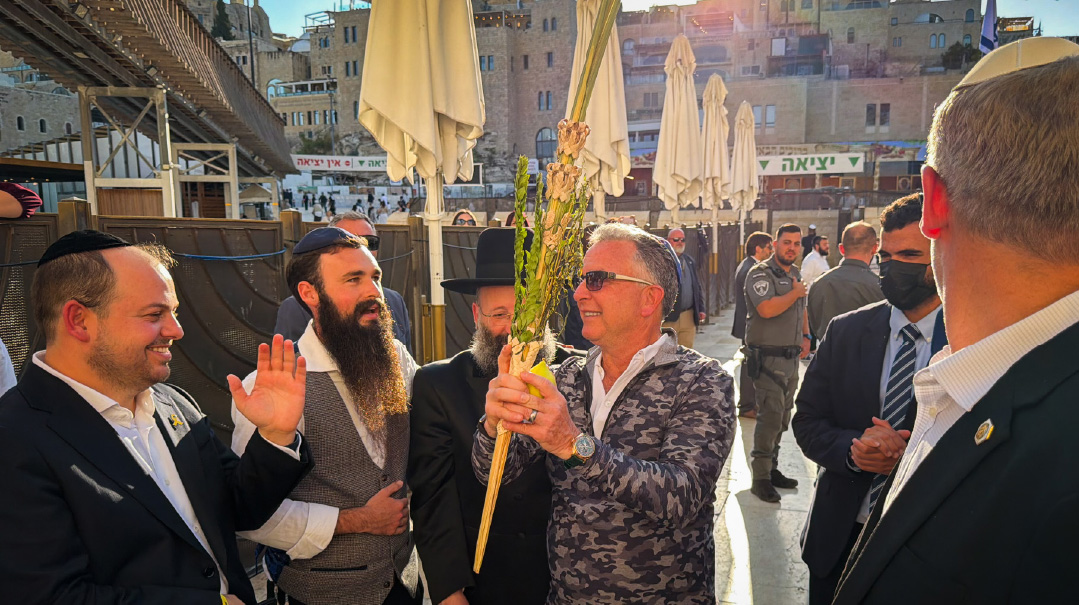Thoughts on Shivah

Another zechus for the neshamah of Alta Ruda bas Avraham
Few things in life afford the opportunity for reflection and introspection like sitting shivah. Although the days themselves can be a whirlwind of receiving people, often nonstop, as they walk in and out of the beis avel, these days can be exceptionally meaningful when utilized properly. Upon the recent petirah of my mother a”h, when I was thrust into the unenviable position of “echad min hachaburah,”I resolved to record some mental notes of my own experience with the hope of not only maximizing my own observance of this hallowed mitzvah, but also of sharing my thoughts with others. Perhaps it could serve as yet another zechus for the neshamah of Alta Ruda bas Avraham.
As many of us can attest, the atmosphere in a beis avel can be very uncomfortable and awkward. If the mourner is reticent, we tend to stumble over ourselves to make conversation, which often leads us to topics that have no connection to the niftar or the aveilus at all. I recall being menachem avel one of my rebbeim on a hot Yerushalayim day when a prominent talmid chacham entered to offer his condolences. This distinguished guest, who was himself in failing health, stayed for a mere few minutes and promptly left. I remained for quite some time, and when I eventually made my way out and headed for the bus stop, I came across this talmid chacham outside, waiting for a bus in the stifling heat. Since he was no stranger to me, I had the chutzpah to ask him why he had so quickly left the air-conditioned apartment to wait in the heat, especially given his fragility and declining health. (Indeed, he was niftar during that year and I was able to share this incident with his almanah.)
His answer made an indelible impression on me, which has lasted nearly four decades. “I needed to come to be menachem avel out of hakaras hatov, as your rebbi was of great help to me when I was seeking proper medical attention. But you heard yourself how the conversation was going — people were exchanging stories about gedolim that had no pertinence to the niftar. I had nothing more to stay for.”
Although it is certainly natural for even gedolei Torah to converse about such topics in a setting where limud haTorah is off-limits, and if the avel chooses to steer the conversation in another direction, it is his prerogative and should be respected, to this adam gadol the irrelevant topic of conversation was a sign that it was time to leave. Nichum aveilim is nichum aveilim and his mitzvah had concluded.
Often, people may wonder what they are doing in a beis avel when the banter turns to anything and everything except the niftar. There is an anecdote about Rav Elyashiv ztz”l being asked whether the proper time to recite “Hamakom yenachem” is upon entering the beis avel or leaving. He responded that he didn’t understand the question; he walks into the house, recites “Hamakom” — and leaves. Whether this is an accurate quote or not, the message is clear. Nichum aveilim is simply nichum aveilim.
In this regard, I had quite the experience when I was still in kollel. I received a phone call from Rav Avrohom Kahaneman ztz”l, the president of my alma mater, Yeshivas Ponevezh. He informed me that a prominent supporter of the yeshivah, who was the designated honoree at the upcoming dinner to boot, had suddenly passed away. The niftar’s father had been instrumental in building Torah in his hometown, and although his descendants were, sadly, not shomrei Torah u’mitzvos, they still retained kavod for Torah, and would observe a levayah and shivah in the traditional manner. Since Rav Kahaneman was a Kohein, he would not be able to personally attend the levayah, so he informed the family that the yeshivah was sending a representative who would be maspid on his behalf.
Me.
I had never delivered a hesped in my life. I respectfully asked the rav how I could be maspid someone I didn’t even know, but he shrugged off the question. “You’re a baal kishron,” he said. “You’ll figure it out.” I scrambled to do my homework and somehow pulled off the hesped. Later that week, I decided to pay a shivah visit to complete the mitzvah. To my great surprise, shortly after entering the exclusive Gold Coast condo where the family was sitting, one of the aveilim gave a “klop” and announced “Nichum aveilim!”
“Isn’t that why we’re here?” I naively asked.
“Rabbi,” he responded, “you know what a shivah house looks like in our circles. But we set aside a half hour every day just to talk about the deceased. In your honor we will do it now.” I was stunned, and at the same time proud of the “pintele Yid” shining through in this family, as manifested by their appreciation of the purpose of shivah. I grabbed the opportunity and stayed through Minchah and Kaddish.
Returning to my own experience, I was determined to do my mother a”h proud and give her this last kibbud the way it was intended. I had accompanied her to nichum aveilim a number of times, and she never failed to cry and express deep emotion. She was a woman who valued the substance and essence of mitzvos, and I didn’t want to let her down. I made a conscious decision, therefore, not to accept phone calls if there were visitors present in the room. My mother abhorred call-waiting, considering it an affront to the first caller to move on to the second one, as if caller number one wasn’t as important. Callers could leave me a message, and would hopefully understand why I couldn’t answer.
The shivah was one continuous loop of recollections of the nifteres, close to 94 years’ worth, although most of what I knew of her first four decades was gleaned from what I heard from others. Our family was left with a great legacy and an abundance of material to share.
Rav Chaim Shmuelevitz ztz”l would relate that his father constantly pointed out the virtues and unique qualities of his own father, as this was part of the mitzvah of kibbud av. In this regard, my mother’s shivah presented an opportunity I did not wish to squander. It was satisfying that my efforts did not go unnoticed, and visitors commented how easy it was to come and take part in the mitzvah. In truth, though, this was all an outgrowth of my mother’s legacy and her incredible life story of survival and strength despite incredible odds.
At the shivah, I could almost hear her saying, “Nu, Henoch, redt nisht azoi fil” (don’t talk so much), but I had the license, for once, to ignore her.
A thought occurred to me during one rare quiet moment at the shivah, when I had the opportunity to take in what was happening. Most of us are aware of the halachah that the avel should begin the conversation. (Rav Shlomo Zalman Auerbach ztz”l maintained that if the avel is already talking to others, a visitor need not wait to be addressed personally. The idea is that it must be apparent that the avel wants to converse.) Perhaps the reason the avel is supposed to begin the conversation is because he should be the one controlling the conversation. The avel is mourning a loved one, and is not interested in remarks such as, “Oh, that reminds me of my mother, do I have a story for you!” No, you do not. And the avel is not mourning your mother.
As one of the menachamim remarked, the agenda at this nichum aveilim was very obvious: It was about this nifteres, and nothing else. I was simply doing what I learned from others and what this nifteres deserved. My biggest regret was not having seized the opportunity to focus more on my mother’s qualities while I could share my appreciation with her. My admiration would have to remain in the category of “mechabdam b’mosam,” honoring parents after they leave us.
After the shivah, I shared some of these thoughts with a neighbor, who commented that this is all fine and well when the avel has material about the niftar and is comfortable sharing it. In truth, however, there are valuable lessons to learn from the life of any person who has spent time on this world, not only from gedolim or from survivors who have stories of unbelievable faith, determination, and miracles.
As a case in point, shortly after I got up from shivah, I had the opportunity to officiate at a levayah for a 65-year-old man who was severely developmentally disabled. His brothers were the sole aveilim, as his father passed away a long time ago and his mother is sadly unaware of what is going on. One of the brothers acknowledged in his brief eulogy that the niftar must have possessed a pure neshamah and that Hashem had given the surviving siblings the responsibility and privilege to properly care for him. The beis avel reflected this theme and was inspiring and elevating to those who entered.
There wasn’t a whole lot to say about the niftar himself, yet the beis avel was rich in discussion about the purpose of neshamos such as these and how we relate to them. This alone surely contributed to the zechuyos this man was accumulating in the Next World.
The Gemara teaches us, and the Rambam codifies this in Mishneh Torah, that nichum aveilim is one manifestation of the mitzvah of “V’halachta bidrachav,” going in the ways of Hashem. So how did Hashem do nichum aveilim? Rashi (Sotah 14a) states, “He comforted [Yitzchak] on the death [of Avraham] and blessed him with the birchas aveilim.” It’s as simple as that.
May all of Klal Yisrael merit to comfort and be comforted among aveilei Tzion v’Yerushalayim.
Originally featured in Mishpacha, Issue 772. Rabbi Plotnik,a talmid of the yeshivos of Philadelphia and Ponevezh, has been active in rabbanus and chinuch for 25 years and currently serves as ram in Yeshivas Me’or HaTorah in Chicago.
Oops! We could not locate your form.













